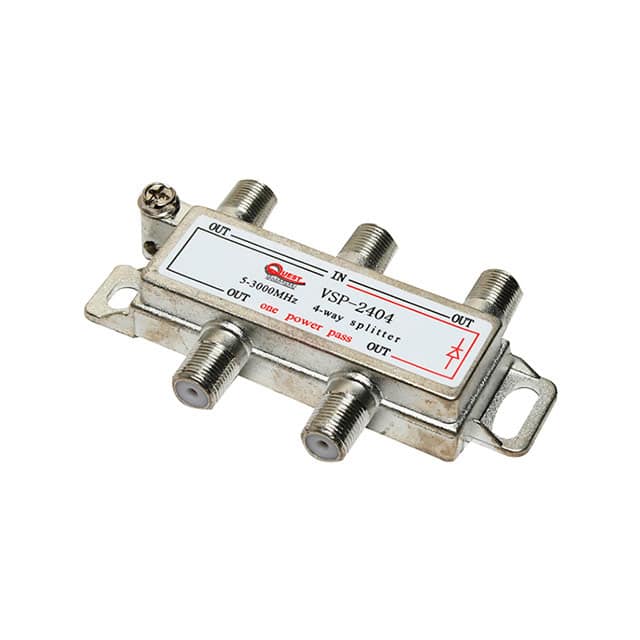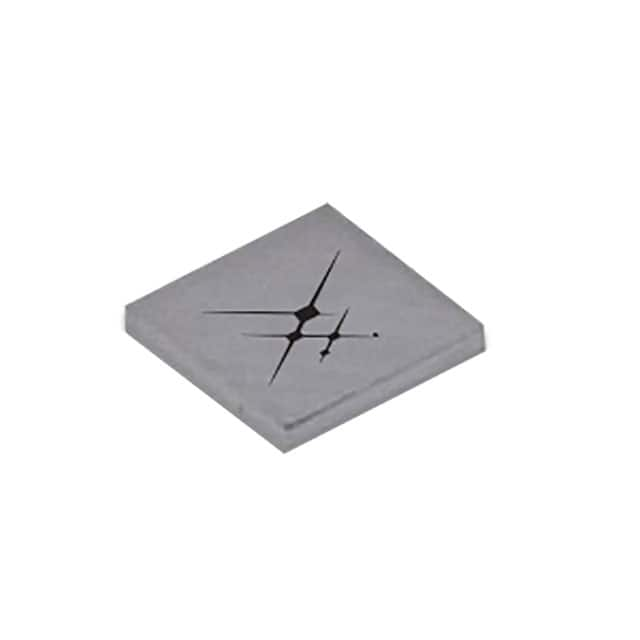Ⅰ. RF/IF and RFID
Ⅱ. Electrical Characteristics of RF/IF and RFID
Ⅲ. Physical Characteristics of RF/IF and RFID
Ⅳ. The characteristics of RF/IF and RFID
Ⅴ. The applications of RF/IF and RFID
RF (Radio Frequency) and IF (Intermediate Frequency) are terms commonly used in the field of radio communication and electronics. RF refers to the frequency range used for wireless communication, typically between 3 kHz and 300 GHz. In radio communication systems, RF signals are modulated with the information to be transmitted and are then transmitted over the airwaves. RF/IF and RFID

IF, on the other hand, is the frequency range that lies between the RF and baseband frequencies in a communication system. It is used to select a specific frequency from the RF signal and amplify it before it is demodulated to extract the information signal. IF frequencies are typically in the range of a few megahertz (MHz) to a few hundred megahertz.
RFID (Radio Frequency Identification) is a technology that uses radio waves to identify and track objects. RFID tags contain an antenna and a microchip that stores data, and when the tag is within range of an RFID reader, the reader sends out an RF signal that powers the tag and reads the data stored on it. RFID is used in a wide range of applications, including inventory management, asset tracking, and access control. RFID tags can be either passive or active, with passive tags relying on the energy from the reader to power the tag, and active tags containing their own power source.
Electrical Characteristics of RF/IF and RFID
The electrical characteristics of RF/IF and RFID systems are crucial in determining their performance and reliability. Here are some key characteristics:
RF/IF:
Frequency: RF systems operate in the radio frequency range, typically between 3 kHz and 300 GHz, while IF frequencies are typically in the range of a few megahertz (MHz) to a few hundred megahertz.
Amplitude: The amplitude of the RF and IF signals determines the signal strength, which affects the range and sensitivity of the system.
Bandwidth: The bandwidth of an RF/IF system determines the range of frequencies that can be transmitted and received.
Noise figure: The noise figure measures the amount of noise added to the signal by the system components and affects the system's sensitivity and signal-to-noise ratio.
Dynamic range: The dynamic range is the ratio of the strongest to the weakest signal that can be handled by the system without distortion.
RFID:
Frequency: RFID systems operate in the radio frequency range, typically between 125 kHz and 5.8 GHz.
Read range: The read range is the maximum distance at which an RFID tag can be read by a reader, and it depends on the power output of the reader and the sensitivity of the tag.
Data rate: The data rate is the rate at which data can be transmitted between the RFID tag and reader, and it depends on the modulation scheme used and the bandwidth of the system.
Memory capacity: The memory capacity of an RFID tag determines the amount of data that can be stored on it.
Anti-collision: RFID systems must be able to handle multiple tags in the same area without interference, which requires an anti-collision mechanism to prevent data collisions between tags.
Physical Characteristics of RF/IF and RFID
In addition to the electrical characteristics, the physical characteristics of RF/IF and RFID systems also play an important role in their design and performance. Here are some key physical characteristics:
RF/IF:
Antenna design: The design of the antenna is critical to the performance of an RF/IF system, as it affects the radiation pattern, gain, and impedance matching of the system.
Transmitter power: The power output of the transmitter affects the range and sensitivity of the system.
Receiver sensitivity: The sensitivity of the receiver determines how weak a signal it can detect, and affects the range and reliability of the system.
Impedance matching: Impedance matching between the components in the RF/IF system is important to minimize signal reflection and maximize power transfer.
Size: The physical size of the components in the RF/IF system can affect the system's portability and ease of integration.
RFID:
Tag size: The physical size of the RFID tag affects its portability and ease of integration into objects.
Tag material: The material of the tag can affect its performance, with metal objects requiring special types of tags to avoid interference.
Tag attachment: The method of attaching the RFID tag to an object can affect its reliability and durability.
Reader size: The physical size of the RFID reader can affect its portability and ease of use.
Reader antenna: The design of the reader antenna affects the read range and sensitivity of the system.
The characteristics of RF/IF and RFID
RF/IF and RFID technologies have distinct characteristics that define their operation and functionality. Here are some key characteristics of RF/IF and RFID:
RF/IF:
Frequency: RF/IF systems typically operate in the radio frequency range, which is between 3 kHz to 300 GHz. This frequency range allows for efficient transmission and reception of data wirelessly over a range of distances.
Amplitude: The amplitude of the RF/IF signal affects the strength of the signal, which in turn affects the range and sensitivity of the system. In many applications, the signal amplitude must be carefully controlled to ensure reliable data transmission.
Bandwidth: The bandwidth of an RF/IF system is the range of frequencies that can be transmitted and received. A wider bandwidth allows for higher data transfer rates and improved system performance.
Noise figure: The noise figure of an RF/IF system measures the amount of noise added to the signal by the system components. A lower noise figure means less noise is added to the signal, resulting in a higher signal-to-noise ratio and better system performance.
Dynamic range: The dynamic range of an RF/IF system is the ratio between the strongest and weakest signals that can be processed without distortion. A high dynamic range allows the system to handle a wide range of signal strengths and ensures reliable operation.
RFID:
Frequency: RFID systems operate at various frequencies, including low-frequency (LF), high-frequency (HF), and ultra-high-frequency (UHF). The frequency range depends on the application and affects the read range and data transfer rates.
Read range: The read range of an RFID system is the distance between the RFID reader and the RFID tag at which data can be reliably transferred. The read range depends on the frequency of operation, the power output of the reader, and the sensitivity of the tag.
Data rate: The data rate of an RFID system is the speed at which data can be transferred between the reader and the tag. The data rate depends on the frequency of operation, the modulation scheme, and the bandwidth of the system.
Memory capacity: The memory capacity of an RFID tag determines the amount of data that can be stored on the tag. This can range from a few bytes to several kilobytes, depending on the application.
Anti-collision: RFID systems must be able to handle multiple tags within the read range of the reader without interference. Anti-collision algorithms are used to ensure that data is not lost or corrupted in such situations.
The characteristics of RF/IF and RFID technologies determine their functionality and applications. Understanding these characteristics is important for designing and implementing effective and reliable systems.

The applications of RF/IF and RFID
RF/IF and RFID technologies have numerous applications across a variety of industries. Here are some examples of their applications:
RF/IF:
Wireless communication: RF/IF technology is used in wireless communication systems, such as cellular networks, Wi-Fi, Bluetooth, and satellite communication. These systems use RF/IF to transmit and receive signals wirelessly over a range of distances.
Radar and sensing: Radar systems use RF/IF to detect and track objects, such as aircraft, ships, and weather patterns. Sensing systems use RF/IF to measure physical parameters, such as temperature, pressure, and humidity.
Navigation: Navigation systems, such as GPS, use RF/IF to determine location and provide accurate positioning information.
Medical devices: RF/IF technology is used in medical devices, such as MRI machines, to generate and receive electromagnetic signals for diagnostic purposes.
Industrial automation: RF/IF technology is used in industrial automation systems, such as process control and monitoring, to wirelessly transmit and receive data.
RFID:
Inventory management: RFID technology is used in inventory management systems to track products and assets in real-time. This can improve supply chain efficiency and reduce inventory costs.
Asset tracking: RFID technology is used to track assets, such as equipment and vehicles, to improve operational efficiency and reduce losses.
Access control: RFID technology is used in access control systems, such as keyless entry and security systems, to verify the identity of authorized personnel and control access to restricted areas.
Healthcare: RFID technology is used in healthcare to track patients, medical equipment, and medications to improve patient safety and reduce costs.
Animal tracking: RFID tags are used to track and identify animals in wildlife conservation, livestock management, and pet identification.
Retail: RFID technology is used in retail to track products, manage inventory, and prevent theft.
Contactless payment: RFID technology is used in contactless payment systems, such as credit cards and mobile payment systems, to securely transfer payment information without the need for physical contact.
RF/IF and RFID technologies have revolutionized many industries by providing efficient and reliable communication, sensing, and tracking capabilities. Their applications continue to expand and evolve, making them a critical component of modern society.
标签:RF



